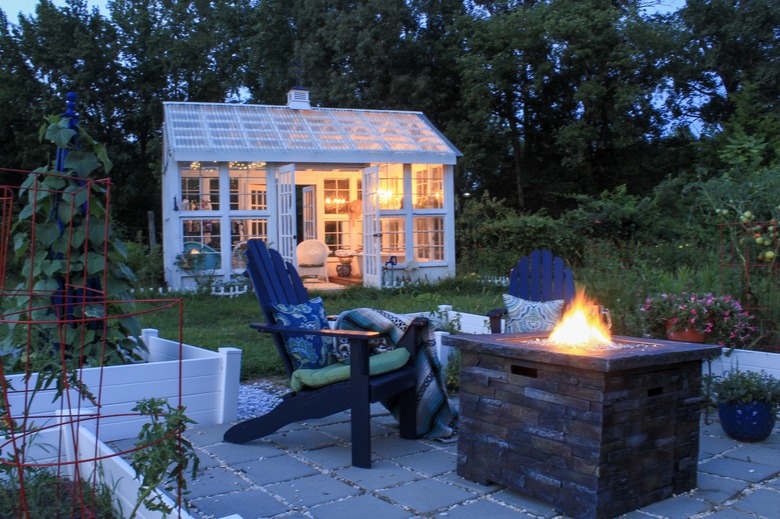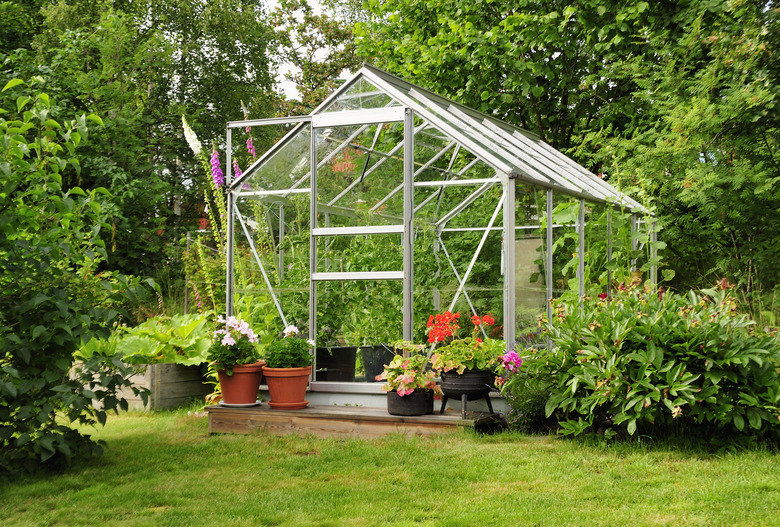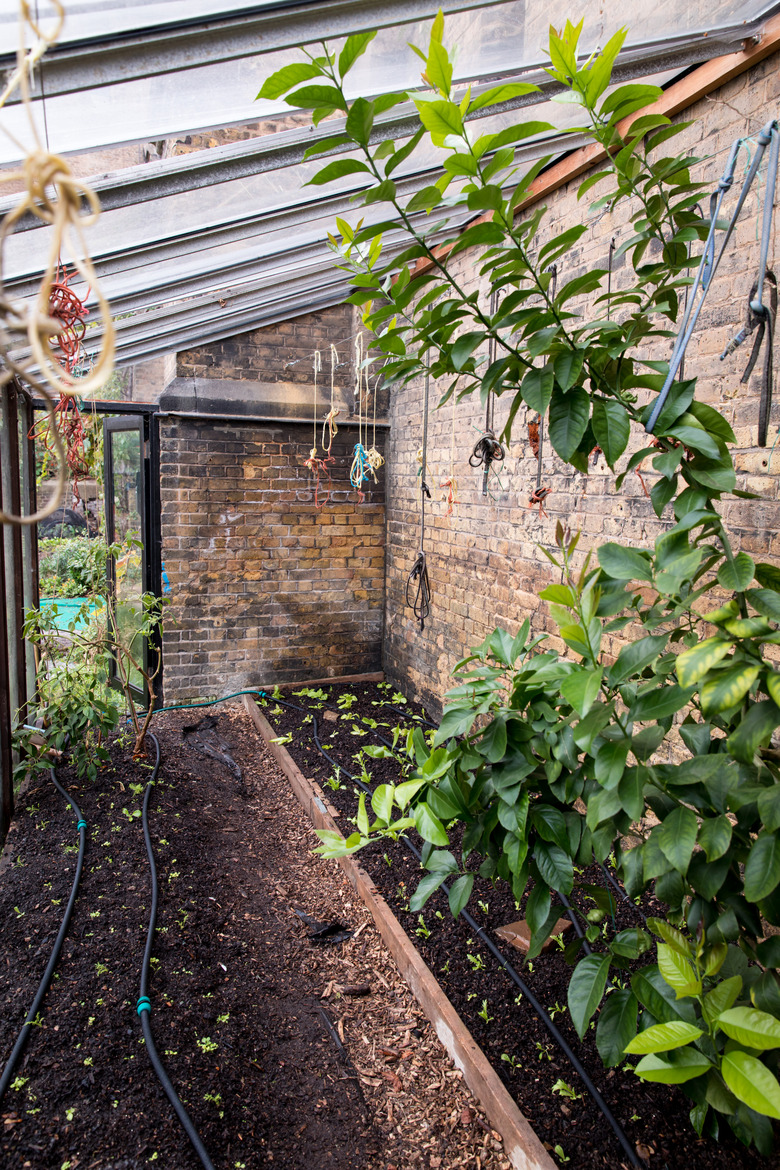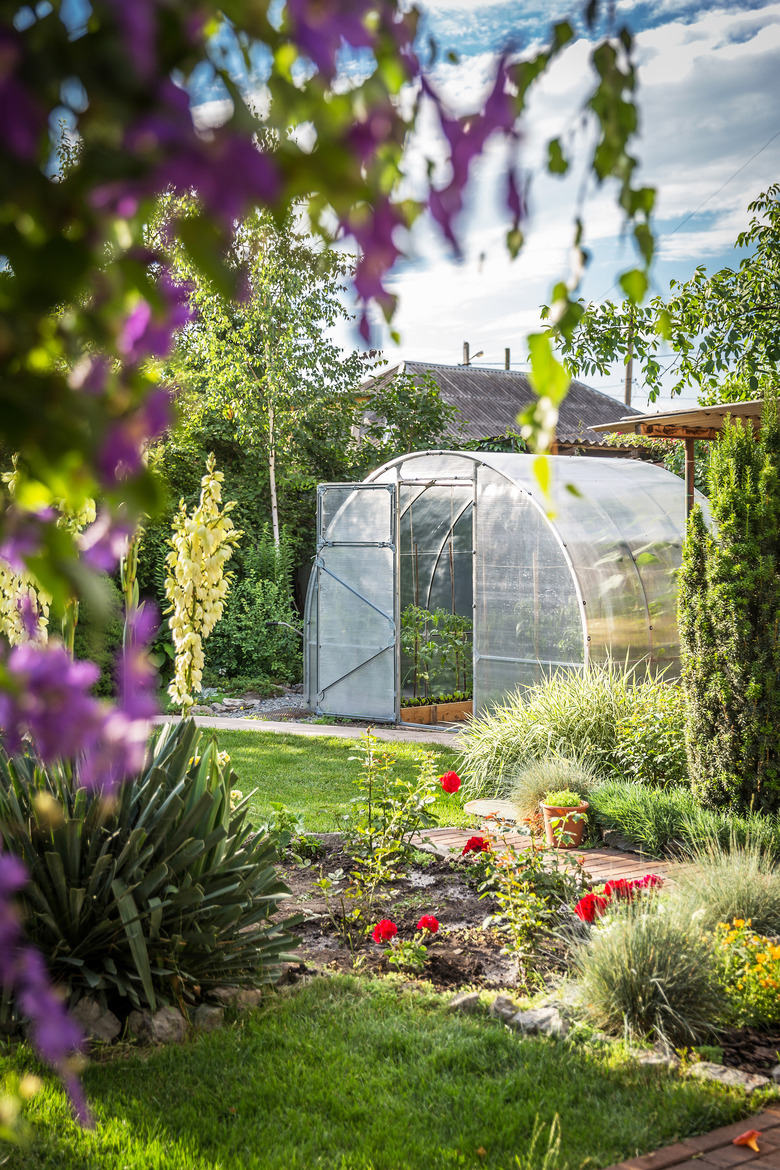Types Of Greenhouses And Greenhouse Structures
We may receive a commission on purchases made from links.
If you're interested in extending your growing season and maybe even growing through the winter, you might consider investing in a greenhouse. There are several types of greenhouses that are suitable for the backyard (or front yard) gardener. However, picking the right one can be a bit of a challenge. While all types share some similarities — they all provide protection and ensure a suitable microclimate for plants — there are a few important differences among the different types of greenhouses.
Common Types of Greenhouses
Common Types of Greenhouses
Not all backyards and properties are created equal. Thankfully, there are many types of greenhouses, each suitable for different purposes and spaces. Before deciding which greenhouse to buy or build for your backyard, consider several factors:
- The size of your yard. Grab a tape measure and make sure you have enough room to accommodate a greenhouse. This isn't the time to eyeball measurements. If you have limited yard space, a lean-to greenhouse addition can help you maximize growing space without gobbling up too much valuable outdoor real estate.
- Your climate. When choosing a greenhouse for your yard, it's essential to consider your climate. If you live in an area with a lot of snow or wind, you'll need a sturdier structure, like a gable-roof greenhouse. A lean-to is a great greenhouse option if you plan to use it year-round since its proximity to an existing structure makes it easier to heat.
- Municipal regulations. Some towns don't allow you to build a greenhouse in your yard, and most require that you purchase a permit if you plan to build a shed or similar structure on your property. You'll likely need to get a permit for geodesic domes and other greenhouses that require a foundation.
- Your growing needs. Do you intend to use the structure for seed starting? You'll likely want shelving to keep things organized. Not all greenhouse types are suitable for adding shelves. An A-frame greenhouse, for instance, is poorly suited for gardeners wanting to add side shelving along the length of the structure's inner walls.
The A-Frame Greenhouse
The A-Frame Greenhouse
- Pros: Easy to build, low construction costs.
- Cons: Not as space efficient as other types of greenhouses because of its shape.
- Best uses: Ideal for hobby gardeners who want an attractive greenhouse for seed starting that doesn't take up too much room in the yard.
An A-frame greenhouse is a freestanding structure that features a basic triangular design. If you're having trouble picturing this type of greenhouse structure, just think of a classic tent shape. These greenhouses are usually made of glass or polycarbonate panels. Most glass greenhouses are composed of tempered glass, which is sturdy and weather-resistant — the thicker the glass, the better the insulation.
A-frames are one of the easiest greenhouse types to build, but the shape does limit interior space. Because of the severe roof slope, the inside of the structure is not very space efficient. Airflow is also limited where the side walls narrow, which can become a problem if the greenhouse is not properly vented.
The Gable-Roof Greenhouse
The Gable-Roof Greenhouse
- Pros: Uncomplicated design, maximizes interior space, promotes adequate air circulation.
- Cons: Higher material costs than some other designs.
- Best uses: Suitable for wide-open, south-facing backyards with few obstacles.
Gable-roof greenhouses are also known as post-and-rafter models. Like A-frames, they're one of the most common backyard greenhouse options on the market. Gable-roof greenhouses look like mini houses or cabins. The roof of these structures has a main center rafter held up by supporting walls. Are you having trouble picturing this type of greenhouse? Think of what a child produces when asked to draw a house: a square with a triangle on top.
While square-shaped models are most common, larger, rectangular-shaped gable-roof greenhouses exist but are more often used in commercial operations because they take up more space. The top-heavy design of this type of greenhouse requires a solid base, which poses a building challenge and can increase building costs. Typically, these types of greenhouses are covered with glass or glazed polycarbonate panels (which are the cheapest option).
Gable-roof greenhouses are an excellent choice for gardeners growing in rows. The interior of this type of greenhouse can also accommodate multiple benches for seed starting if row gardening is not your cup of tea. The shape makes it easy to heat and limits the potential for uneven heating throughout the interior of the structure, meaning you're unlikely to have plants in one spot feel cold while the rest of your plant babies rest comfortably.
The Dome-Top Greenhouse
The Dome-Top Greenhouse
- Pros: Extremely durable, unique look.
- Cons: Difficult to build.
- Best uses: Excellent choice for areas with heavy snowfalls and harsh winters.
Super-sturdy dome-type greenhouses are incredibly energy efficient. Also known as geodesic domes, these kinds of greenhouses feature an intricate panel design that maximizes light transmission for plants. The paneled design also makes it easy to install vents to promote adequate airflow, which is vital since the interior of these structures gets very warm. Geodesic domes look very unique and make a neat addition to an eco-friendly yardscape. They also provide plenty of ground space for growing. However, some gardeners might find it challenging to arrange plants in a cohesive, organized way because of the unconventional interior shape of this type of greenhouse.
The Gothic-Arch Greenhouse
The Gothic-Arch Greenhouse
- Pros: Fewer supports needed than other types of greenhouses; shape helps prevent snow and rain buildup.
- Cons: Some loss of interior space on the sides because of the shape.
- Best uses: Ideal for large yards and row gardens.
The walls of these freestanding greenhouses are usually made of aluminum or PVC supports covered with plastic sheeting. They feature a curved roof design with a pointed arch. The roof resembles that of an old gothic cathedral, hence the name. The curved shape means there's no need for structural trusses, which can help you cut down on building costs. The steeper roof design also allows the structure to shed snow and rain, but it limits interior side-wall headroom and space. Like geodesic greenhouses, gothic-arch models can also include ventilation panels. However, paneled designs are usually much pricier.
The Lean-To Greenhouse
The Lean-To Greenhouse
- Pros: A very stable, space-saving design.
- Cons: Requires a south-facing wall.
- Best uses: Great for small yards and windy climates.
A lean-to greenhouse an attached greenhouse. It's basically half of a gable-roof greenhouse shoved against an already-standing structure. Instead of four freestanding walls, your house (or perhaps a barn) acts as a supporting wall. If you're short on space and don't have a huge yard, a lean-to greenhouse can help you capitalize on available space close to your home.
A lean-to greenhouse is also cheaper to build than other models. However, in some areas, it may be considered a home addition, which means you might require a building permit and may have to pay more property tax because of the increased square footage. A lean-to greenhouse is not simply a structure that is leaning on your house, as the name implies. It utilizes your house's exterior wall for support but is in essence an added room.
Lean-to greenhouses are often covered in tempered glass or polycarbonate panels depending on the construction budget. The height and length of your exterior wall ultimately limit the final size of a lean-to greenhouse. It can't be taller or wider than the wall next to which it's built.
An advantage of being close to your home is that your greenhouse will be easy to access. Lean-to greenhouses are also easier to electrify and heat because of their positioning. Choosing the right spot for your lean-to greenhouse is vital. Putting it on the wrong side of your house can be disastrous and can leave you with a nonfunctional addition that's poorly suited for growing. If you put your greenhouse on the north side of your home, it won't get enough sun exposure. Most plants need at least six hours of full sun. Placing your lean-to next to a south-facing wall ensures it will receive plenty of sunlight that won't be blocked by your home. When placing any type of greenhouse, remember to also consider other structures nearby that might add undesired shade.
The Hoop House
The Hoop House
- Pros: Budget-friendly, easy to DIY, easy to ventilate.
- Cons: Not as structurally sound as other season extenders. If the sheeting isn't correctly installed, wind can be a problem.
- Best uses: Great for small gardens, beginner gardeners and those on a budget.
Hoop houses are a popular, low-cost option for protecting raised beds or in-ground row gardens. You can also use them for seed starting and plant propagation. They're available in various sizes, from small-scale DIY versions to large-scale structures that accommodate multiple rows of crops. They're made out of curved piping — aluminum or PVC — and polyethylene sheeting or other types of greenhouse coverings depending on the season. In the summer, you can swap polyethylene film for insect netting for pest prevention. You can also cover the structure with multiple sheeting layers for added protection and improved insulation.
The half-hoop shape helps prevent precipitation from pooling, but gardeners in areas with heavy snowfall or very stormy weather will need to reinforce their hoop houses. These greenhouse structures aren't as sturdy as gable-roof or A-frame models, but they are very affordable and easy to ventilate.
The Portable Greenhouse
The Portable Greenhouse
- Pros: Cheap, lightweight, easy to store.
- Cons: Not very durable, poorly suited for winter use.
- Best uses: Protection for seedlings and tender plants. Also works well as a hardening-off aid.
These freestanding greenhouses are typically made of lightweight aluminum piping and plastic sheeting. They look like outdoor shelving with plastic draped over the top. A zipper allows access to the interior shelves. They're great for gardeners who live in apartments and have limited outdoor growing space. No backyard? No problem! A portable greenhouse protects plants early in the season during the hardening-off phase and is easy to disassemble and store when you're done. Because a portable greenhouse is compact and can easily be taken apart, you can take it with you should you need to move — something you can't do with many other types of greenhouses.
The drawback? Portable greenhouses are no match for windy days and won't stand a chance if left exposed in the middle of a yard. You're better off placing your portable greenhouse right next to a structure, like a wall, for protection.
References
- Gardener's Supply Company: Greenhouse Gardening
- Greenhouse Fanatics: Greenhouse Structure Types Pros & Cons
- Eartheasy: Greenhouses: How to Choose and Where to Buy
- ProperlyRooted: A Primer on Backyard Greenhouses
- Dave's Garden: Types of Greenhouses and Which Works Best for You
- Rise: How to Start Your Own Greenhouse



